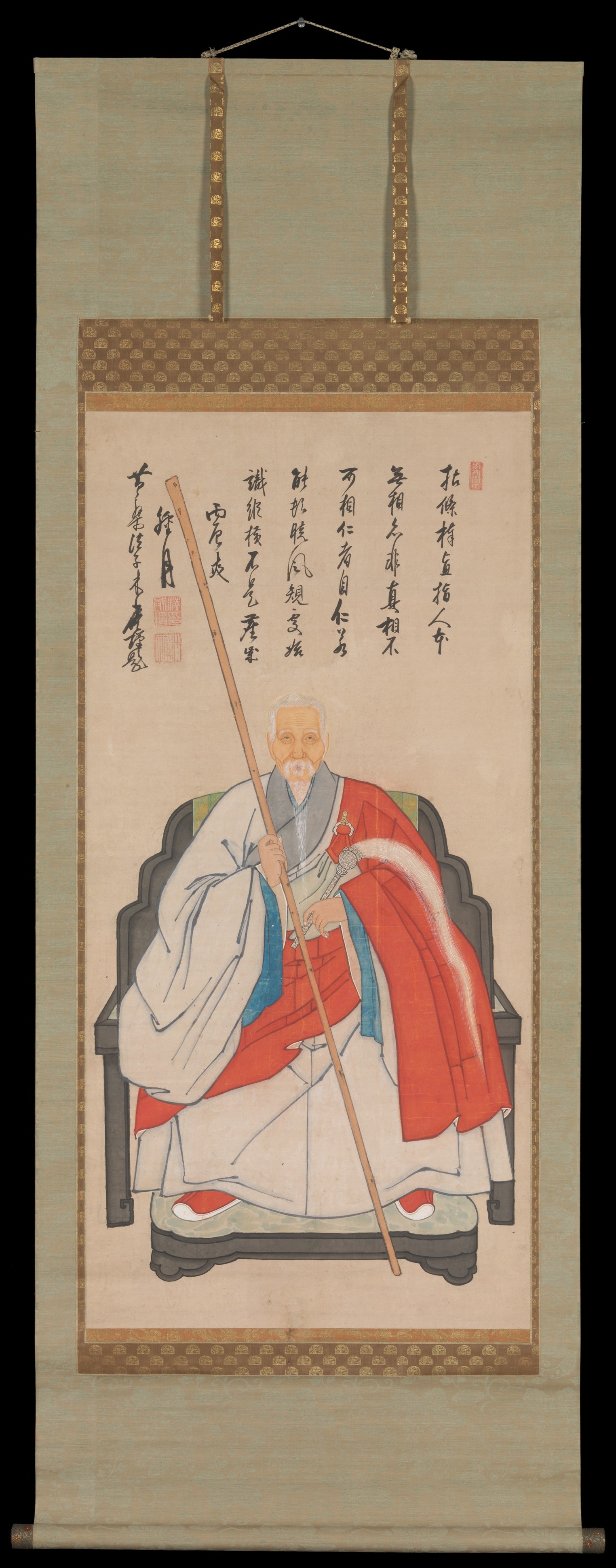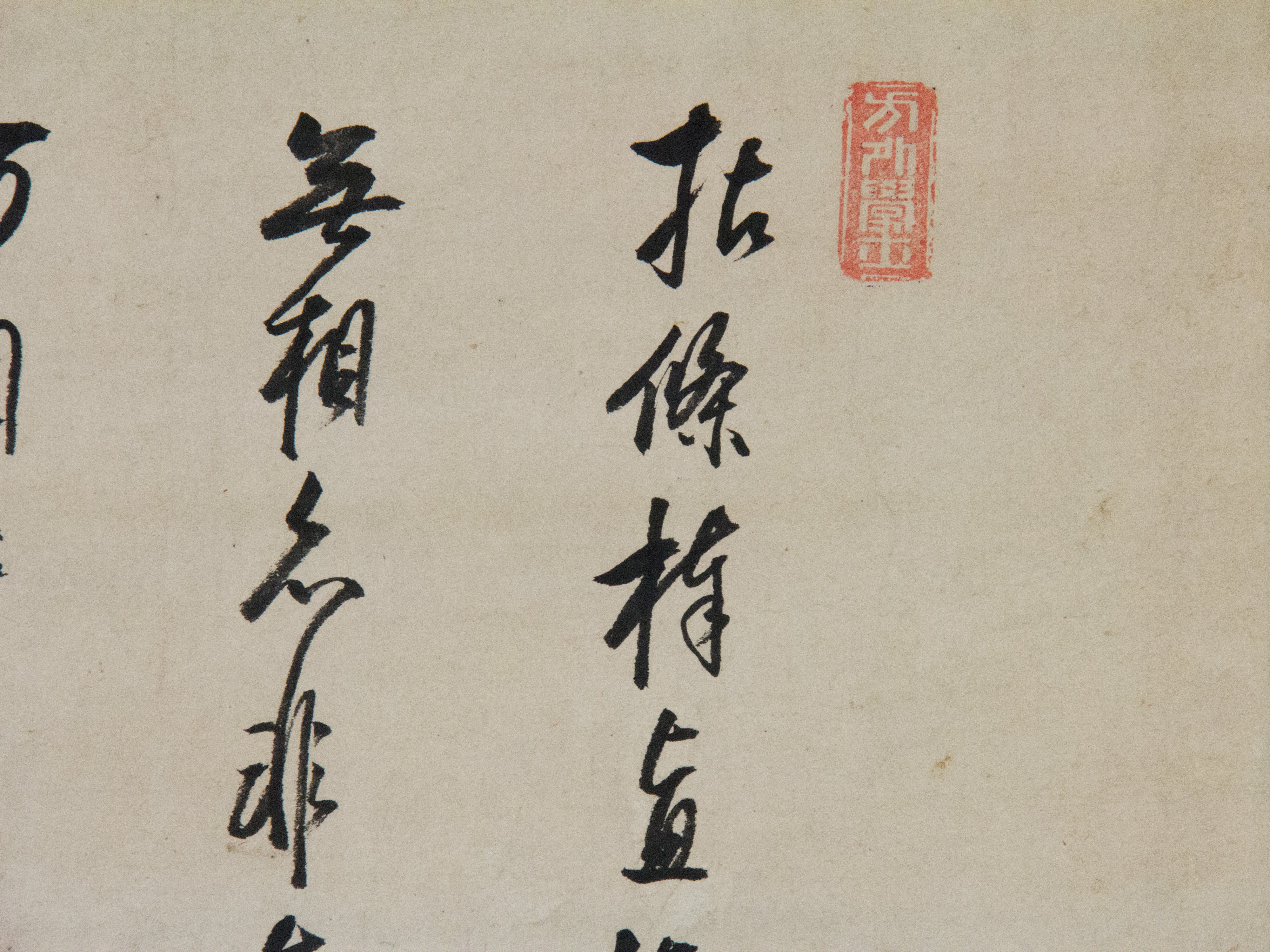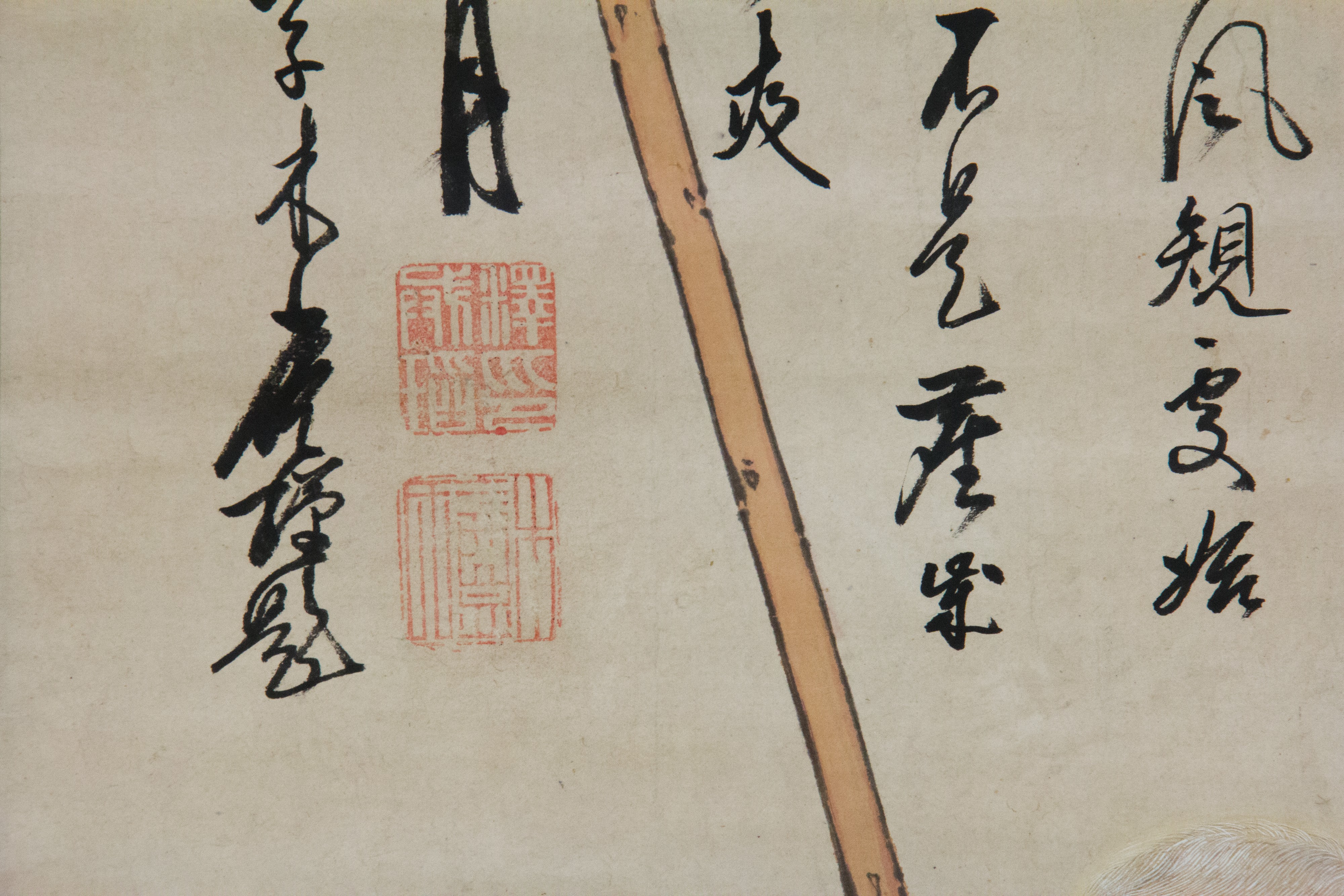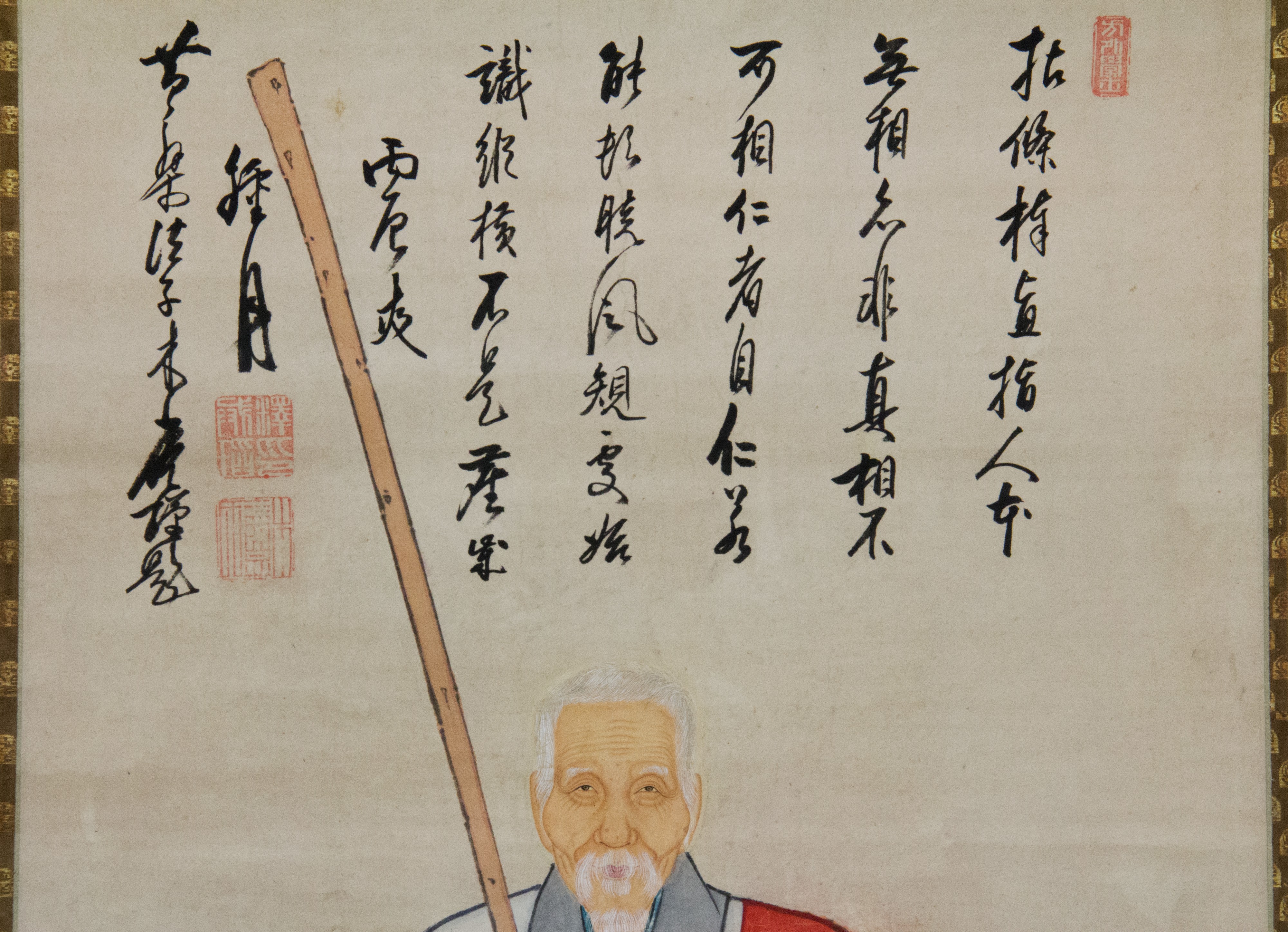Portrait of Yinyuan Longqi
Painting by an unidentified artist
Inscription by Muan Xingtao Chinese
Not on view
This arresting portrait depicts Yinyuan Longqi, the Chinese founder of the Ōbaku school of Zen Buddhism in Japan. Yinyuan (known as Ingen in Japan) was born and raised in China, but after the fall of the Ming, he left the chaos of dynastic transition for the relative safety of Japan. The veneration of colorful, iconic images of teachers runs counter to the conventional understanding of Zen life as austere and iconoclastic. Portraits such as this would have been displayed and venerated during important rites and ceremonies of the Buddhist calendar. The inscription in dynamic calligraphy is by Yinyuan’s direct disciple Muan Xingtao, known as Mokuan Shōtō In Japanese.
Of all Ōbaku monks, Mokuan’s calligraphy is held in particularly high esteem for its brusque and animated qualities. There are a number of surviving portraits of Ingen since he was the founder of a new sect of Buddhism and his disciples who established temples would have wanted to have a founder’s portrait for annual memorial services, yet this stands out as one of the best because of the sensitive rendering of facial details. Portraits of a Buddhist master also served as documents of the transmission of teachings from master to disciple. The surviving portraits, done from life or based on life drawings, all resemble each other, though we can trace the aging process by comparing them. This work is clearly based on the Ingen’s appearance at the very end of the venerable monk’s life. Since the inscription of the calligraphy was done just three years after the monk’s death, it was either done from life or based on a model.
In the portrait, Ingen holds a whisk in the proper right hand, with long white fur, echoing the white in the facial features. In the proper left hand, he holds a long staff which extends into the calligraphy above, adding to the power of this painting. The inscription above the figure reads as follows in translation:
Holding his stick, he points directly to humanity,
Yet as he was originally without form, this portrait is not true.
His form cannot be seen as form,
His benevolence is merely his natural benevolence.
If, all of a sudden, you can understand this law,
Then your spirit can roam beyond the world.
Signed: Respectfully written by Muan [Mokuan] the monk in the year 1676, second month.
(translation by Jonathan Chaves from The Art of Zen, by Stephen Addiss, 1989)
Due to rights restrictions, this image cannot be enlarged, viewed at full screen, or downloaded.
This artwork is meant to be viewed from right to left. Scroll left to view more.






